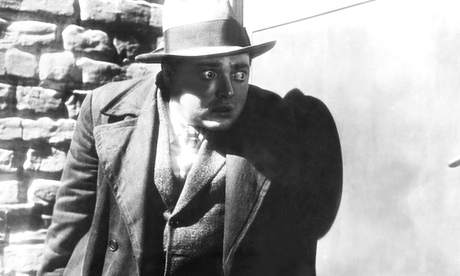
M is for Murder, or Mörder, the chalked letter pressed on the shoulder of a notorious child-killer in Berlin by a member of an organised criminal underground – a secret sign to identify the psychopath and kill him. This is so that the police can call off their own city-wide manhunt, which is seriously inconveniencing the criminal classes. Fritz Lang's 1931 movie is back on re-release and Peter Lorre plays the porcine, pop-eyed serial killer Hans Beckert, speaking German with a rasping, querulous shout – rather different to the unmistakable nasal, lugubrious English of his later Hollywood career.
Otto Wernicke plays pudgy police inspector Lohmann, and Gustaf Gründgens is Schränker, the crime overlord who will finally sit in judgment on Beckert, presiding over something between a kangaroo court and a revolutionary tribunal. Lang depicts the paranoia and feverish atmosphere that gives birth to the dual investigation from the cops and the criminals. Lohmann has a determined, forensic technique, analysing the handwriting on Beckert's jeering letter to the press, and the woodgrain of the table the paper appears to have pressed on.
Meanwhile, a hidden army of crooks and thieves pass on their own tips, and a blind peddler crucially recognises the tune Beckert whistles. It is a cousin to the early Hitchcock of The Lodger, and I have always found something even something faintly Ealingesque about its cynicism and satire. What is fascinating is how Lang fetishises smoking: everyone has huge cigars, bulbous pipes and cigarettes in holders. It is as if smoke is the endless industrial byproduct of the city's folly, greed and shame.

